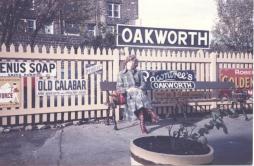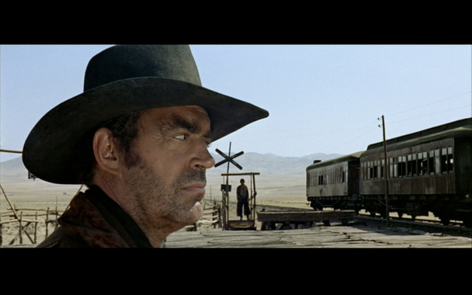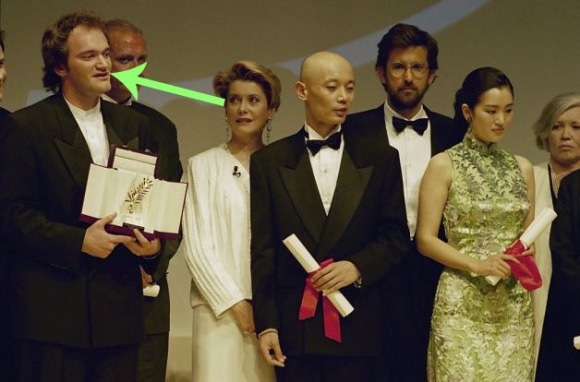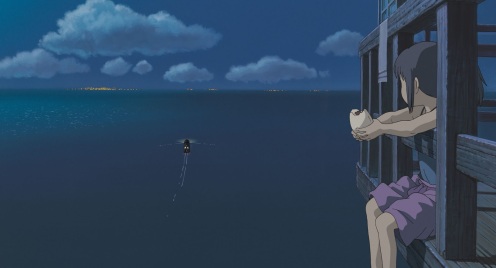
“The restlessness and the longing, like the longing that is in the whistle of a faraway train.
Except that the longing isn’t really in the whistle—it is in you.”
– Meindert Dejong, The Little Cow and the Turtle
I have been thinking about Trains of late, I recently went to see a Miyazaki double feature, Spirited Away and The Wind Rises, where those beautiful iron beasts carry the wanderlust/lost on a spiritual trip to the afterlife or to an other life. I spent a good solid month in a small town in Wisconsin called Prairie Du Chein, and every night I was serenaded by the whistling soliloquy of the distant train and it was true, it was a displaced wail for a longing inside of me, a longing I knew couldn’t be fulfilled in a tiny town (no matter how much I romanticized it). The trains whistle still haunts me inside, I can feel it like a force of breath between my ribcage.The wailing between the rails guarding my unconscious. I long, so I play Vashti Bunyan’s Train Song.
I am on a bit of train binge at the moment, I am, as it were, loco over locomotives. It especially amuses me that trains petrified Freud, he suffered from Siderodromophobia (fear of train travel) through his childish eyes the steam jets from a train looked like souls burning in hell. In his self-analysis he said the rocking of the train reminded him of the loss of his mother, love thy mother.
The following is a list of my favorite train tracks, films, books, poetry ladeda.
LITERATURE

Ghost Cat by Joy Cowley
A couple years ago,
A deaf old cat named Mack
Went for an evening walk
Along the railway track.
He didn’t hear the whistle
Of the midnight train.
‘Dead!’ said the engine driver.
‘We won’t see him again.’
Me-ow!
The driver was mistaken
The ghost of Mack came back
To haunt the midnight train
On the section of the track.
The driver said he saw him suddenly appear.
His coat was grey like mist
His eyes were cold and clear.
Mee-ee-o-ow!
And sometimes lonely travellers
Bound for the distant places,
Woke up after midnight
With pawmarks on their faces.
They gave a cry of terror
As a pale grey shape slid by,
And through the darkened carriages
They heard the ghostly cry.
Mee-ee-ee-ee-o-o-o-ow!
This poem by children lit darling Joy Cowley was probably my first exposure to terror, the accompanying picture drawn by a child called Waaka Harris didn’t help to nullify the unease. Between the whistle of the train, the callous response of the engine driver, the iridescent haunting of a Cat, with such a congenial name like Mack, I was absolutely petrified but also disturbingly beguiled on my first train trip.
Railway Rhymes by CL Graves
“When books are pow’rless to beguile
And papers only stir my bile,
For solace and relief I flee
To Bradshaw or the ABC
And find the best of recreations
In studying the names of stations.”
Ah to escape by train from life’s shit, now that would be a great adventure. There is something therapeutic about studying the names of streets and stations. The best part about studying train stations from a moving train is that it flashes by and it is gone, and it’s on to the next one. Ponder and release.

Strangers on a Train by Patricia Highsmith
Train lit. has been embroiled in the world of what I am going to call hard-boiler crime. The Train in Patricia Highsmiths psychological thriller opens a platform for a psychopathic playboy to prey of those in transit-physically and mentally. An A to B journey for Guy Haines is derailed by a strangers proposition-a moider swap, he will kill his unfaithful wife, if Guy kills his father.

Murder on the Orient Express by Agatha Christie
What appears to be a formulaic whodunnit on a train, opens up a space for derailing ideas of crime and punishment. It sparks on the terrors of train travel, being cooped up in space of compartmental collapse with strangers, who could perhaps kill you. Exotic landscapes are rendered impressionistic by the trains speed, and whodunnit becomes a landscape to the shaky forefront of human ethics.
FILM
In 1986 the Lumiere brothers created the first unintentional horror film, when their train sent audiences (unfamiliar with how film worked) screaming from the auditorium, solidifying the symbolic power of the train on screen. The terrible, terrific imprinted forever on the collective unconscious.
Click on the pictures to watch a scene from these films.

North by Northwest, Alfred Hitchcock, 1959
The reason why I attribute train travel to sexy espionage, slinky martinis and comfortable sleeping lounges, Amtrak quickly dissolved those romanticized views. The end of this film has the best sexual innuendo involving a train.

Once Upon a Time in the West, Sergio Leone, 1968
Trains have and still are intrinsic to the myth building of the West in the American consciousness. Sergio Leone capitalizes on the ‘traveling’ nature of the Western to redress the mythological expansion of the iron horse across the west-frontier building on crack. Ennio Morricone’s soundtrack, accentuates the plodding, dying whistle of the demi-gods on horses, as the train makes tracks across the western narrative.
Spirited Away, Hayao Miyazaki, 2001
There is something so peaceful about a train taking spirits home, train as travel to the afterlife. The train scene lulled into a slumber by the medicinal music of Joe Hisaishi is like a meditative pause. It opens a space for a long sigh after life is done.

La Bete Humaine, Jean Renoir, 1938
Jean Renoir’s poetic realist masterpiece takes us into the coal clogged, hellish belly of the industrial monster. In this locomotive infested world, the plights of suffering male,sacrificial woman and popular front are fought in the slinky, oilskin shadows.

The Music Man, Morton DaCosta, 1962
The opening scene where a honky salesman rap coalesces with the rhythm and sounds of the train, as if the men are having synchronized sex with the train, not to mention each other is just brilliant. The fact they are salesman (prostitutes in suits) jostling in synchrony with the grind, steam and steady thrust of the locomotive will have you in hysterics.
The list could go on and on so here is a montage of train scene from the films I love.
TRAIN TRACKS
Click on the picture below to listen to my Spotify playlist, TRAIN TRACKS

DERAILED LOVE
5:15 The Angels Have Gone – David Bowie
All Aboard – Muddy Waters
Jumping someone else’s train/another journey by train – The Cure
Downtown Train – Tom Waits
LONGING WITH A LONESOME WHISTLE
500 miles – Peter, Paul and Mary
Train Song – Vashti Bunyan
Blues in the Night – Ella Fitzgerald
Homeward Bound – Simon & Garfunkel
THE GREAT ESCAPE
The Draize Train – The Smiths
Gone Darker – Electrelane
Long Black Train – Lee Hazlewood
High Speed Train – R.E.M
REEL ROAD
The Sixth Station (Spirited Away) – Joe Hisaishi
Farewell to Cheyenne (Once Upon a Time in the West) – Ennio Morricone
Conversation Piece (North by Northwest) – Bernard Herrmann
Lara’s Theme (Dr Zhivago) – Maurice Jarre

“In this fast movin’ world that we live in nobody rides ’em much these days
Maybe I’m a little sentimental cause I know that things have to change
But I’d still like to go for a train ride cause I’ve got a thing about trains .”






































































